Ranking your website at the top of the SERPs (search engine results pages) is hard, especially with the increased competition among websites in recent years. However, it’s not hard for you if you understand the strategies of SEO and how to implement them for your own good, and one of these SEO strategies is getting high-quality backlinks.
So, you may be asking, What are backlinks, and how do I use them? And are backlinks important for SEO? or how to get high-quality backlinks in 2024?
Backlinks are important to get if you want to rank higher in the SERPs, beat your competitors, and get more organic traffic to your website. They are one of the most important things every website owner is trying to get.
But unfortunately, not all backlinks are good; there are high-quality ones that will help your website rank higher (even if it’s new) and low-quality ones that, if you use them in the wrong way, may harm your website (even if it’s old), and even they can get your website penalized by Google or any other search engine.
Lucky for you, you are in the right place. In this article, you’ll learn how to get high-quality backlinks the right way and rank your website higher on Google.
What are backlinks?

Backlinks (also known as “incoming links,” “inbound links,” or “one-way links”) are links from other websites to a page on your website.
Simply put, if some website links to your site, then you have a backlink from that site. When you link to some other website, they’ll have a backlink from you.
Backlinks are also called “inbound links” since they represent another website’s traffic coming to your website, and they are considered an indicator of how popular your website is with users.
They are a crucial component of search engine optimization (SEO) because search engines like Google use them as a way to measure the relevance and authority of a website. When one website links to another, search engines consider it like a vote of confidence in the content on that site. The more high-quality, relevant websites that link to a site, the more likely it is to be seen as an authoritative and trustworthy source by search engines.
It is crucial to realize, however, that not all backlinks are created equal. Some backlinks are considered more valuable than others, such as those from high-authority websites or those that are relevant to the content on the linked-to site (we will talk about all types of backlinks later in this article).
Overall, backlinks are an important factor in determining a website’s search engine ranking and can have a significant impact on its visibility and traffic.
What are the different types of backlinks?
As we mentioned before, there are several different types of backlinks, and not all backlinks are created equal. Some backlinks are considered more valuable by search engines to your website than others, and some are easy to get and some are not. and understanding them all can help you better optimize your website for search engines and drive more traffic.
Just one thing to mention is that maybe when you are searching for information about this topic (backlinks), you’ve encountered some sources that mention two terms about backlink types: backlink type and backlink attributes.
These two terms, “backlink type” and “backlink attributes,” are sometimes used interchangeably, but they refer to different aspects of a backlink.
Backlink type refers to how a backlink is created, such as through a directory listing, guest posting, social media sharing, or whether it was created naturally or manually. Different types of backlinks have different levels of value and importance for SEO purposes.
On the other hand, backlink attributes refer to the specific characteristics of a backlink, such as whether it is a dofollow or nofollow backlink, a free or sponsored backlink, or an internal or redirect backlink. These attributes help search engines determine the relevance and authority of the linked-to content, as well as the intent behind the linking website’s decision to include the backlink.
And to specify more, we mentioned the two terms, along with their sorts:
The 11 main types of backlinks
- Natural backlinks: These are links that are created without any deliberate effort on the part of the website owner. They occur naturally when other websites find your content valuable and link to it. These types of backlinks are considered the most valuable to search engines because they are genuine and organic.
- Manual backlinks: These are links that are intentionally created by the website owner or an SEO professional. This can include techniques such as guest blogging, creating directory listings, or participating in forums and online communities. While manual backlinks can be effective, they need to be done carefully to avoid being seen as spammy or manipulative.
- Editorial backlinks: These are links that are included in the body of an article or blog post by a website’s editor or author because he finds the linked content valuable and relevant to their readers. These links are seen as more valuable than links that are purchased or exchanged, as they are considered to be a natural endorsement of the linked-to content. Editorial backlinks are highly coveted because they are typically from high-authority websites and are seen as a sign of trust and authority by search engines such as Google and Bing.
- Non-editorial backlinks: These are types of backlinks that are not placed within the content of an article or blog post by a website’s editor or author (they are the opposite of editorial backlinks), such as links in comments, forum posts, or guestbook entries.
- Contextual backlinks: Contextual backlinks are those that are embedded within the body of a web page’s content and surrounded by text that is relevant to the linked-to page. For example, if a blog post discusses the benefits of using a particular service or product, a contextual backlink might be included within the body of the post linking to the product page. Contextual backlinks also provide additional context and information for search engines to understand the relevance and authority of the linked-to content because they indicate that the linked-to content is highly relevant to the surrounding content.
- Non-contextual backlinks: Unlike contextual backlinks, these are types of backlinks that are not embedded within the body of a web page’s content, such as links in footers, sidebars, or author bios, as well as links in comments, forum posts, or guestbook entries. While non-contextual backlinks can still provide value in terms of building a diverse backlink profile, they are generally seen as less valuable than contextual backlinks because they may not provide as much relevant context or information to search engines.
- Guest post bio links: These are links that are included in the author bio section of a guest post on a specific website. While these links are typically less valuable than editorial backlinks, they can still be an effective way to increase the visibility and authority of your website and drive traffic to it.
- Directory backlinks: These are links that are included in online directories, which are websites that categorize and list other websites based on specific topics or industries, such as niches and global rankings. While directory backlinks were once a popular SEO tactic, they are now considered less valuable due to the high number of low-quality directories that exist.
- Profile backlinks: Those are links that are included in your website’s profile on social media sites such as Facebook or Instagram, forums, or other online communities. While profile backlinks are typically low in value, they can still help increase the visibility of your site and drive more traffic to it.
- Forum signatures: These are links that are included in the signature section of forum posts. While forum signature links can be effective for driving traffic, they are generally considered low-value for SEO purposes.
- Image backlinks: These are links that are embedded in an image and are often used in infographics or other visual content. Image backlinks can be dofollow or nofollow, depending on how they are created.
Overall, it’s important to focus and work hard to get high-quality backlinks that are natural and relevant to your content and from authoritative websites. This can take time and effort, but the rewards in terms of increased visibility, traffic, and search engine rankings can be significant.
The 8 main backlink attributes
- DoFollow backlinks: These are links that are recognized by search engines and are used by search engine bots to pass authority from one website to another. When a website links to another website using a dofollow link, it indicates that the linking website trusts the linked website and considers it to be a valuable resource.
- NoFollow backlinks: These are links that are also recognized by search engines, but unlike dofollow backlinks, they do not pass any authority from one website to another. Instead, nofollow links are used to indicate that the linked website may not be endorsed or supported by the linking website, and they give them a rel=”nofollow” attribute in the HTML code, which tells search engine bots not to follow the link or pass on link authority to the linked-to page.
- User-generated content (UGC) backlinks: UGC stands for User Generated Content, and these links are used to indicate that the link was created by a user, such as in a comment section of a website or forum post. This type of backlink includes a rel=”ugc” attribute in the HTML code, and they are treated similarly to nofollow links by search engines as they are not considered to be editorial endorsements of the linked website.
- Sponsored or paid backlinks: These types of links include a rel=”sponsored” attribute in the HTML code, which indicates that they are included in sponsored content, such as advertisements or sponsored blog posts. Sponsored links are required to be marked with a nofollow tag by search engines to ensure transparency and fairness.
- Link schemes: These are manipulative practices designed to artificially inflate the number of backlinks pointing to a website. Link schemes can include buying or selling links, exchanging links with other websites, or participating in link farms. These practices are considered black hat methods to get backlinks, and they are against Google’s webmaster guidelines and can result in penalties or even a loss of search engine visibility, so if you want to avoid problems, don’t use them. Instead, use the legitimate methods that we will talk about later in this article.
- Internal Backlinks: These are links that point from one page of a website to another page on the same website. Internal links are important for both user experience and SEO purposes, as they help navigate users to relevant content and indicate the structure and hierarchy of a website.
- Redirect backlinks: These are links that are used to redirect users from one page to another, either on the same website or a different website. Redirect backlinks can be either dofollow or nofollow, depending on the type of redirect used.
- Government or educational backlinks: These are links that are from government or educational websites, which are typically high-authority domains. Because these domains are often seen as trusted sources of information, backlinks from them can be highly valuable for SEO purposes.
Remember, while both backlink type and backlink attributes are important considerations when it comes to building a high-quality backlink profile, it’s crucial to concentrate on generating valuable content and establishing connections with other websites in your field or niche. By doing so, you can naturally get high-quality backlinks from other websites that view your content as a valuable resource.
It’s crucial to understand that not all backlink attributes are created equal in terms of their value for SEO purposes. Dofollow and editorial backlinks are generally seen as more valuable than nofollow and non-editorial backlinks, but it’s also important to focus on creating high-quality, valuable content that attracts a diverse mix of high-quality dofollow and nofollow backlinks because it can help improve your website’s overall search engine ranking and boost its authority.
Furthermore, it is essential to keep in mind that the quality and relevance of a backlink are more important than its type, therefore you need to focus on the quality and not the quantity when you are trying to get high-quality backlinks.
Why are backlinks so important for SEO? (Pros of backlinks)

When it comes to search engine optimization (SEO), backlinks are like the secret sauce that can propel your website to the top of search engine results. But why are backlinks so essential for SEO?
Well, we can summarize the crucial role that backlinks play in boosting your website’s visibility, authority, and search engine rankings in four main points:
Your website gets authority from other sites
Backlinks are so important for SEO (search engine optimization) because search engines such as Google and Bing consider backlinks as votes of confidence or suggestions for a specific page that is authoritative and needs to be ranked higher in the SERPs (search engine results pages), and these votes come from high-authority websites whenever they link to your website.
Pages or websites with a high number of high-quality backlinks from high-authority websites tend to have high search engine rankings, which leads to more organic and high-quality traffic.
However, not all backlinks are created equal. Backlinks are evaluated by search engines based on the quality of the domain name (the website link) giving the links, not the number of backlinks your website has. As a result, as we constantly advise, prioritize quality above quantity.
Higher Rankings in the SERPs
Backlinks are essential for improving your website’s ranking by showcasing its value to search engines. That’s why, The more high-quality backlinks you have, the higher your pages can rank in search engine results.
Moreover, backlinks play a significant role in brand discovery, boosting brand awareness, and attracting potential customers.
In terms of authority, backlinks serve as a signal to search engines that your content is trusted by others. When multiple sites link to the same webpage or website, search engines perceive it as valuable and deserving of visibility on search engine results pages (SERPs). This, in turn, positively impacts your site’s ranking position and increases its search visibility.
In a nutshell, search engines view backlinks as votes of confidence. The more votes your web pages accumulate, the greater their chances of ranking well for relevant search queries. Therefore, focusing on acquiring high-quality backlinks from reputable sources is crucial for strengthening your website’s authority, improving search rankings, and ultimately attracting more organic traffic.
Get more visitors to your website (referral traffic).
High-quality backlinks have the potential to bring you a lot of visitors. When well-known websites connect to your website, you can increase referral traffic from individuals who are already interested in the topics you’re addressing. This enables more people to enter your marketing funnel.
The equation is simple: backlinks exist to point people to useful resources. That’s why they’re clickable. As soon as a person clicks on a link to your website, you receive referral traffic.
The capability of your content to be found
Search engines have a systematic process of discovering new content, and backlinks play a vital role in this process. When search engines revisit popular and authoritative web pages they already know, they scan for any new links within those pages. This means that if your website receives backlinks from these well-established and frequently visited pages, search engines are more likely to discover your content faster.
The reason behind this is that search engines prioritize the crawling frequency of popular pages over less popular ones. By obtaining backlinks from popular pages, you increase the chances of search engines noticing and indexing your content promptly.
It’s essential to focus on acquiring backlinks from authoritative sources within your industry to enhance the visibility and discoverability of your website’s content. Remember, the more backlinks you have from reputable and influential pages, the more likely search engines are to find and rank your content.
Are there any disadvantages of backlinking in terms of SEO? (Cons of backlinks)
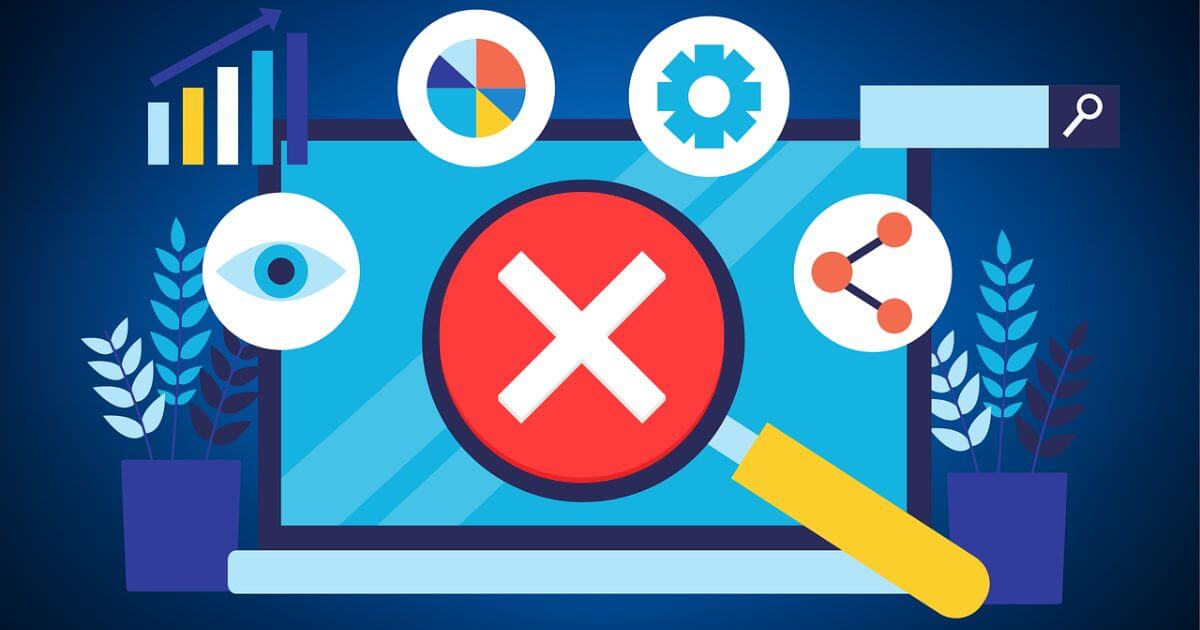
When it comes to SEO and backlinking, there are indeed certain disadvantages that need to be considered alongside the benefits. Let’s explore these potential drawbacks to ensure a comprehensive understanding:
Firstly, one disadvantage is the risk of acquiring low-quality backlinks. Search engines prioritize the quality and relevance of backlinks, so if you accumulate links from spammy or irrelevant websites, it can negatively impact your SEO efforts. Hence, It’s crucial to focus on obtaining high-quality backlinks from authoritative and trustworthy sources that are relevant to your industry or niche.
Another potential disadvantage is the risk of unnatural linking patterns. Search engines have become adept at detecting manipulative tactics such as link schemes or excessive link exchanges. It’s important to maintain a natural link profile and avoid engaging in black-hat SEO practices. Building backlinks organically over time is key to establishing credibility and avoiding penalties from search engines.
Overoptimized anchor text is another concern. While anchor text plays a role in SEO, over-optimization by using exact-match keywords excessively can raise red flags with search engines. It’s advisable to diversify your anchor text with variations of keywords and incorporate branded anchor texts for a more natural linking profile.
Furthermore, linking to irrelevant or unrelated websites can dilute the authority and relevancy of your website. It’s essential to ensure that the websites you link to are reputable, trustworthy, and provide value to your audience. Quality and relevance should guide your backlinking strategy, focusing on sites that align with your industry or topic.
Lastly, it’s important to note that you have limited control over how other websites link to your content. Websites may remove backlinks without notice, resulting in the loss of valuable link juice. Regularly monitoring your backlinks and reaching out to website owners can help mitigate this risk and maintain a healthy backlink profile.
In conclusion, while backlinking is a valuable SEO strategy, it’s crucial to consider the potential disadvantages. By focusing on acquiring high-quality backlinks, avoiding manipulative practices, diversifying anchor text, linking to relevant websites, and monitoring your backlinks, you can maximize the benefits while minimizing any drawbacks.
What kind of backlinks are good for my website?
When it comes to enhancing your website’s SEO through backlinks, there are several key factors to consider that determine whether a backlink is beneficial or not for your website.
Here are the types of backlinks that are highly beneficial for your website:
They Include Your Target Keyword In The Link’s Anchor Text
First and foremost, backlinks that include your target keyword in the anchor text are valuable. When other websites use your target keyword as the clickable text for the link leading to your site, it sends a strong signal to search engines about the relevance and importance of your content.
Come from trusted websites (higher authority websites)
Backlinks from trusted and authoritative websites are also essential. Higher-authority websites are viewed as reliable sources of information, and when they link to your website, it boosts your credibility in the eyes of search engines. Hence, Aim to secure backlinks from reputable sources within your industry or niche.
The link is from a domain name that hasn’t linked to you before
Another important factor is obtaining backlinks from domains that haven’t linked to your website before. Diversifying your backlink profile by acquiring links from new domains can increase your website’s visibility and exposure to different audiences.
The link is a “Dofollow” link, not a “Nofollow”
Ensure that the backlinks you acquire are “dofollow” links rather than “nofollow” links. Dofollow links pass on link equity and contribute to your website’s SEO efforts, while nofollow links don’t have the same impact. It’s important to have a healthy mix of both, but prioritize dofollow links for maximum SEO benefit.
The backlink should be a contextual backlink, not a non-contextual
It is important to focus on obtaining contextual backlinks rather than non-contextual ones. A contextual backlink is a link that is embedded within relevant and informative content (we’ve spoken about contextual and non-contextual backlinks in detail earlier in this article). It provides valuable context and reinforces the relationship between the linking page and your website.
Contextual backlinks are highly preferred by search engines as they indicate natural and organic link placement. When the backlink is surrounded by relevant text, it enhances the overall user experience and demonstrates the authority and expertise of your website within the given topic or industry.
On the other hand, non-contextual backlinks, such as those found in sidebars, footers, or unrelated content, hold less weight in terms of SEO value. These backlinks are often seen as less natural and may not provide the same level of relevance or authority to your website.
The website linking to you is related to your website niche
Lastly, strive to acquire backlinks from websites and pages that are related to your site. When the linking site and your website share similar niches or topics, it reinforces the relevance and value of the backlink, making it more impactful in improving your SEO Score.
By focusing on these types of backlinks, you can improve your website’s visibility, credibility, and search engine rankings. Remember, quality always outweighs quantity when it comes to backlinks. Focus on acquiring relevant, authoritative, and contextual backlinks to maximize the impact on your website’s SEO performance and drive organic traffic.
How to Get High-Quality Backlinks to Your Website in 2024

To successfully get high-quality backlinks for your website, there are several effective strategies you can implement.
Here are a few that might help you in your backlink-building efforts:
Use the Broken Link Building Method
One method you can employ is the “broken link building” method. This involves finding broken links on reputable websites within your industry and reaching out to webmasters to suggest replacing those broken links with relevant content from your website. It’s a win-win situation, as you provide value to the webmasters while securing a quality backlink for your site.
To start, use tools like broken link checkers or browser extensions to find broken links on authoritative websites within your niche. Once you have identified a broken link, take note of the specific page and the content that used to be linked.
Next, create high-quality content on your website that serves as a suitable replacement for the broken link. The content should provide value, be relevant to the broken link’s topic, and offer additional insights or resources.
After preparing your content, craft a personalized outreach email to the webmaster or site owner. Introduce yourself, explain the broken link issue you noticed on their website, and kindly suggest your content as a replacement. Emphasize the benefits of replacing the broken link, such as improving the user experience and maintaining a healthy backlink profile. Ensure that your email is concise, friendly, and professional.
When reaching out, it’s essential to highlight the value and relevance of your content. Showcase how it can enhance their website’s credibility, provide useful information to their audience, or fill a gap left by the broken link. Tailor your message to the specific needs and interests of the recipient to increase the chances of a positive response.
Always remember to keep following up if you fail to get a reply initially. Webmasters are often busy, so a gentle reminder can help bring attention to your outreach. Be patient and persistent, as building relationships and securing backlinks through this method takes time and effort.
By utilizing the broken link-building technique, you can not only help webmasters fix broken links but also create opportunities to earn valuable backlinks for your website. This approach benefits both parties by improving website functionality and providing relevant and valuable content to users.
Use Infographics and Other Visual Assets
Infographics and other visual assets are powerful tools for attracting backlinks and engaging your audience. Infographics are illustrations of knowledge, data, or information that are simple to comprehend and share. They combine relevant data, statistics, and visuals in an appealing and easily digestible format.
That’s why utilizing visually appealing and informative assets, such as infographics or any other visual content, can be highly effective in attracting high-quality backlinks.
You just need to create visually appealing and informative infographics or any other visual content related to your niche and promote them on relevant websites and blogs. People love sharing visually engaging content, which will increase the likelihood of you getting valuable and high-quality backlinks.
Remember, creating an infographic involves conducting thorough research on a specific topic within your industry and collecting relevant data, facts, and insights that can be visually presented. Hence, make sure to provide real, relevant, and helpful information to your audience.
You can use professional design tools or online infographic makers such as Canva to create visually appealing and informative graphics since it’s easier for beginners to use them, unlike other professional tools like Adobe Photoshop.
Last but not least, before you publish your infographic, make sure it tells a story and gives relevant information to the audience. When you do, make sure to optimize it for SEO by including relevant keywords, meta tags, and descriptions, as well as making it simple for others to share your infographic by including social network sharing buttons or offering an embed code.
You may additionally reach out to different websites, bloggers, and influencers in your niche and offer them your infographic for distribution. This increases the likelihood of your infographic getting shared and linked to, resulting in more backlinks for your website.
Consider developing additional visual assets, such as videos, photos, slideshows, or interactive material, in addition to infographics. These visual elements may attract the interest of your audience and make your content more engaging and shareable. Remember to improve these graphic assets with relevant keywords and descriptions and promote them through numerous marketing channels for maximum exposure and backlink possibilities.
By including infographics along with other visual elements in your backlink-getting strategy, you can gain backlinks from blogs, websites, and social media platforms that see value in your visually appealing and helpful material. This may dramatically improve the exposure, authority, and search engine rankings of your website.
Analyze and Target Your Competitor’s Backlinks
Another strategy is analyzing and targeting your competitors’ backlinks. Identify your main competitors and use backlink analysis tools to uncover their linking sources. Reach out to these sources and offer your unique content or resources to earn backlinks from them as well.
Analyzing and targeting your competitor’s backlinks is a smart strategy to uncover link-building opportunities and gain insights into effective link-building strategies in your industry.
Start by identifying your main competitors in the search engine results pages for your target keywords. You can do that by using tools like Ahrefs, SEMrush, or Moz to conduct a backlink analysis of your competitor’s websites.
Look for websites that link to your competitors but not to your website. These are potential opportunities for you to reach out and request a backlink. Evaluate the quality and relevance of these backlinks by considering factors such as the authority of the linking domain, the context of the link, and the anchor text used. Focus on high-quality, authoritative websites that align with your niche or industry.
To approach these websites, personalize your outreach message and explain why your content or website would be a valuable addition to their audience. Highlight the unique value you can bring and how it complements their existing content. Be genuine in your communication and show a genuine interest in building a mutually beneficial relationship.
Use Blogger reviews
Blogger reviews are a great method to approach if you want to get high-quality backlinks and increase your brand’s visibility.
You need to connect with influential bloggers or influencers on different social media platforms such as Facebook, Twitter, Instagram, and TikTok in your industry and provide them with free goods or services in return for an honest rating on their blog. This can give beneficial backlinks and enhance the awareness of your brand.
You can start doing that by, first, identifying influential bloggers or influencers in your industry who have a significant following and engage with their audience.
Second, research their content and determine if they have previously written reviews or featured products or services similar to yours.
Third, reach out to these bloggers or influencers and offer them a free sample of your product or access to your service in exchange for an honest review.
Make sure the review is genuine and unbiased. If the blogger finds value in your offering, they are likely to share their experience with their audience and provide a backlink to your website.
Remember, when approaching bloggers, be professional and courteous. Clearly outline the benefits and features of your product or service and explain why you believe it would be of interest to their audience. Provide any necessary information or materials they may need to write a comprehensive and informative review.
Use HARO (Help a Reporter Out)
HARO (Help a Reporter Out) is a website that links reporters and journalists with professionals in different industries. By signing up as a source on HARO, you can receive requests for quotes or contributions from journalists working on stories related to your industry. When you respond to these requests and provide valuable insights or information for their stories, you’ll have the opportunity to earn backlinks from reputable news and media websites or publications.
To start using HARO, Sign up for an account and monitor relevant journalist requests. When you come across an opportunity that matches your expertise, provide valuable insights and information to journalists, who may include your website as a source with a backlink when citing your input.
When you sign up for HARO, you will receive three emails a day. Try to regularly monitor those emails for relevant queries and respond to them promptly and concisely. Ensure that your responses are well-written, informative, and add value to the journalist’s story. Include any relevant credentials or expertise that establish you as a credible source.
By actively participating in HARO, you can showcase your expertise, gain exposure to a wider audience, and earn authoritative and high-quality backlinks from reputable sources. This can significantly boost your website’s visibility, credibility, and SEO performance.
Use the Moving Man Method
The Moving Man Method is a unique and effective way to get high-quality backlinks. It involves identifying websites that have recently undergone changes, such as rebranding, relocation, or closure. These changes often result in broken or outdated links on other websites.
Then, Reach out to webmasters and offer them your relevant content as a replacement for outdated or broken links. thus gaining quality backlinks.
To use this method, start by identifying websites in your industry that have recently undergone changes. You can search for relevant keywords combined with terms like “rebrand,” “relocate,” or “closed down.” Once you have a list of potential websites, use backlink analysis tools such as Ahrefs or SEMrush to determine if they have broken or redirected links.
Then, reach out to the website owners or webmasters and inform them about the broken links on their site. Offer them a solution by suggesting your content or resource that can replace the broken link. This provides them with an opportunity to fix the broken link while also benefiting from your valuable content.
When using the Moving Man Method, it’s important to approach website owners with a helpful and friendly attitude. Show them that you genuinely want to assist in improving their website’s user experience by offering relevant and updated resources. Also, be sure that your content is high-quality and relevant to the websites you’ve contacted; this will increase the chance that the website will choose your content over any other person trying to get backlinks using this method.
Guest Posting
Guest posting on authoritative websites is another widely recognized and effective method for building high-quality backlinks. It involves writing and publishing articles or blog posts on other websites as a guest author, intending to include a backlink to your website within the content or author bio.
It’s simple; you just need to write high-quality, informative content for reputable websites and blogs in your industry and include a link back to your website or blog in the author bio or within the content itself.
To find guest posting opportunities, search for websites in your industry that accept guest contributions. Look for websites that have good domain authority and are known for publishing quality content. Review their guest posting guidelines and pitch ideas that align with their target audience and content style.
When writing guest posts, focus on:
- Providing valuable and informative content that resonates with the target website’s audience.
- Incorporate your backlink naturally within the content.
- Ensuring it adds value and relevance.
- Avoid overly promotional language or excessive self-promotion, as this may diminish the chances of your guest post being accepted.
Guest posting not only helps you secure valuable backlinks but also allows you to showcase your expertise, build relationships with other industry professionals, and increase your brand’s visibility. Moreover, leveraging the established authority of these blogs will boost your website’s backlink profile and help you rank higher in search engine results.
Submit Testimonials
Submitting testimonials to products, services, or websites that you have used and had a positive experience with is another effective way to acquire backlinks. Many businesses feature testimonials on their websites and are often willing to include a backlink to the website of the testimonial provider.
You can start using this method by identifying products or services that you genuinely appreciate, have used, and have benefited from. Reach out to the respective businesses with these products and offer to provide a testimonial. Share your positive experiences, highlighting specific features or benefits that impressed you.
In return for your testimonial, request that they include a backlink to your website. This not only helps you acquire a backlink but also establishes your credibility and expertise in your industry.
Link Reclamation
Link reclamation involves identifying and reclaiming backlinks that were once pointing to your website but have since been lost or broken. This strategy focuses on finding and fixing broken or outdated links to ensure they continue to provide value to your website’s SEO.
Start by conducting a backlink analysis. Use backlink analysis tools like Ahrefs, SEMrush, or Moz to find websites that used to link to your content but no longer do, and search for any broken or lost backlinks.
Once you have a list of these links, reach out to the respective website owners or webmasters and inform them about these broken links and help them reinstate them, which will lead you to regain your valuable backlinks.
You can request that they update the link to point to the correct URL on your website. Provide them with the correct link and any relevant information they may need to make the necessary changes.
Link reclamation not only helps you recover lost backlinks but also ensures that your website’s SEO efforts continue to yield positive results.
Create a Linkable content
Creating linkable content is a proactive approach that you can use to get high-quality backlinks. Linkable content refers to unique, high-quality, valuable, and informative content that naturally attracts backlinks from other websites. such as comprehensive guides, case studies, original research, and expert interviews.
When you create content that is highly shareable and provides valuable insights or information to your audience, other websites are more likely to link to it as a reference or resource, which will increase the chances of your website attracting organic and high-quality backlinks.
To create linkable content, focus on the following strategies:
- In-depth Guides and Tutorials: Develop comprehensive guides or tutorials that cover a specific topic in depth. These types of content are highly valuable to readers and are often shared and linked to by other websites looking to provide authoritative resources.
- Original Research and Studies: Conduct original research or studies within your industry and publish the findings on your website. This type of content is highly valuable as it provides unique insights and data that other websites may want to reference, resulting in high-quality backlinks.
- Infographics and Visual Assets: Create visually appealing and informative infographics or visual assets that present data or concepts in a visually appealing manner. Infographics are highly shareable, making them more likely to be linked to by other websites.
- Expert Roundups and Interviews: Conduct expert roundups or interviews with influential figures in your industry. When you publish these interviews or roundups on your website, other websites may link to them to share the insights and expertise of the featured individuals.
- Unique and Engaging Content Formats: Experiment with different content formats, such as videos, podcasts, or interactive content, to engage your audience. These types of content formats tend to attract attention and can lead to backlinks from websites interested in sharing innovative content.
Remember, when creating linkable content, it’s essential to promote it effectively. Share your content on social media, reach out to industry influencers or relevant websites, and participate in communities or forums related to your industry to increase your website’s visibility and chances of acquiring high-quality backlinks.
By following these strategies and consistently creating linkable content, you can increase the likelihood of attracting high-quality backlinks to your website and improve your overall SEO performance.
Build backlinks from link roundups
Link roundups are curated collections of valuable content on specific topics. Bloggers or industry experts create these roundups to showcase the best resources available. To get backlinks from link roundups, you need to identify relevant roundups in your industry and reach out to the curators. You can suggest your high-quality content that fits their theme. If they find your content valuable, they may include it in their roundup, providing you with a backlink. These backlinks not only drive traffic to your website but also improve your search engine rankings.
Create high-quality content that generates links
Lastly, since certain content formats tend to attract more backlinks than others, focus on creating content that naturally attracts backlinks, such as in-depth guides, insightful case studies, comprehensive tutorials, original research findings, and expert interviews with industry experts. These content formats are highly valuable and often referenced by other websites; they also tend to generate more shares and backlinks due to their unique insights and high value.
Also, focus on creating visual content such as infographics, videos, and interactive content because they also have a high potential for generating backlinks due to their visual appeal and shareability.
When creating content, consider using these formats strategically to increase your chances of earning high-quality backlinks. Remember to optimize your content for relevant keywords, promote it through different marketing channels such as Facebook, Twitter, Instagram, TikTok, your youtube channel, your blog, or through your email list using email marketing, and engage with your audience to maximize its visibility and link-building potential.
Finally, by implementing all 12 of these strategies or a few of them and consistently pursuing high-quality backlinks, you can improve your website’s visibility, authority, and search engine rankings. Also, It’s important to remember that building backlinks takes time and effort, but the long-term benefits are worth it.
Continually monitor and refine your approach, adapt to changes in the SEO landscape, and focus on providing valuable, relevant content to attract natural, high-quality backlinks and drive organic growth for your website.
How do I check the backlinks of any website?
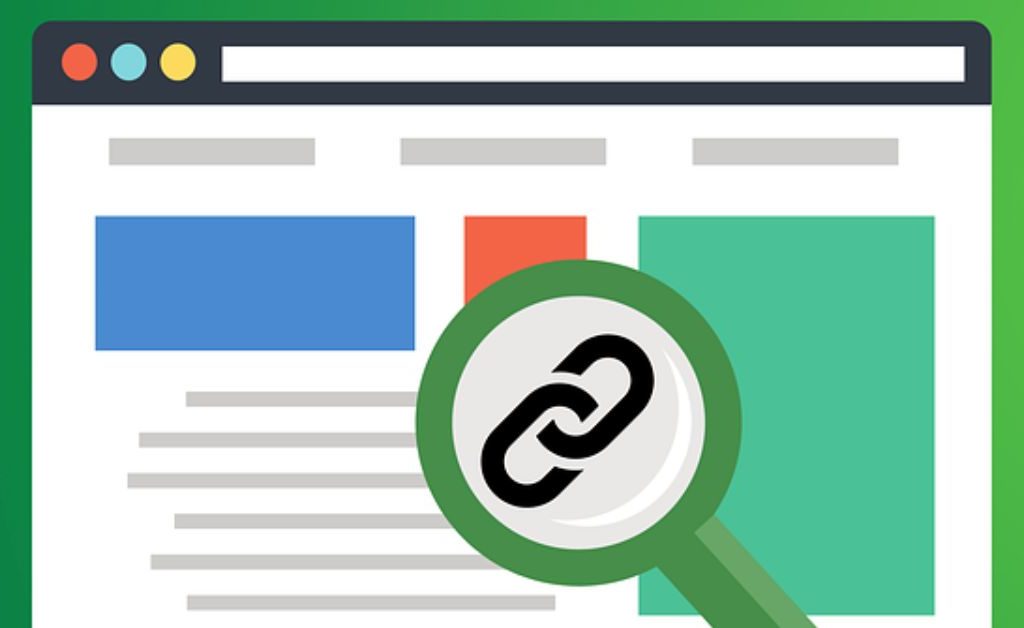
When it comes to checking the backlinks of any website, there are several tools available that can provide valuable insights. Whether you’re an SEO professional or a blog owner seeking high-quality backlinks, understanding your website’s backlink profile is essential to ranking it higher in the SERPs and driving more traffic to it.
Let’s explore the best paid and free backlink checkers to help you analyze and monitor your backlinks effectively.
The Best Paid Backlink Checkers
Paid backlink checkers offer enhanced options and in-depth research to reveal more useful information about your backlink profile than those that are free. These tools often give a wealth of information, such as the number of backlinks, referring domains, anchor texts, and so on.
Ahrefs, SEMrush, and Moz are some popular premium solutions. These tools provide sophisticated backlink analysis tools, competitive research tools, and tracking capabilities, allowing you to obtain insight into your own and your competitors’ backlinks.
Ahrefs
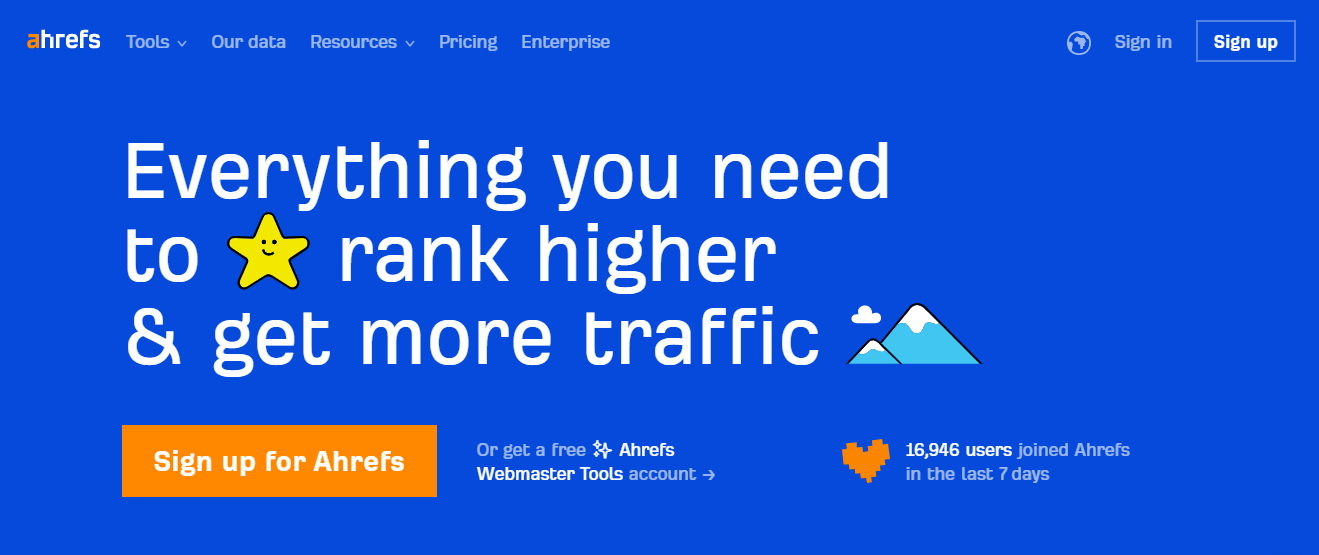
Ahrefs is a comprehensive SEO tool with rich backlink analysis capabilities. It gives a detailed study of the quality and number of backlinks, including data on referring domains, anchor text distribution, domain authority, and other factors.
Ahrefs’ huge database and broad features enable you to monitor your backlink profile, find fresh link-building possibilities, and track the backlinks of your competitors.
SEMrush
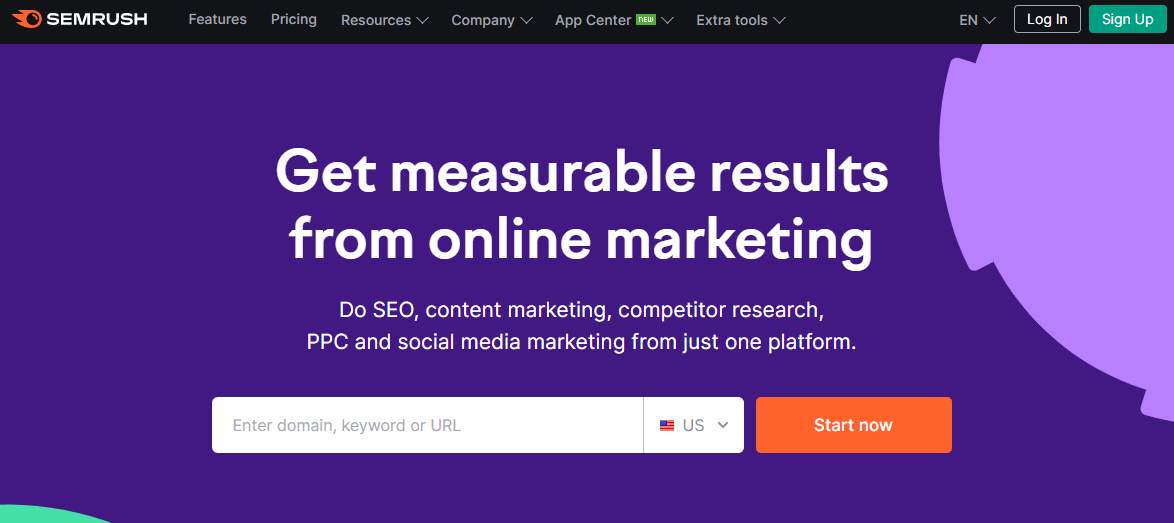
Another significant all-in-one SEO tool that incorporates backlink analysis capabilities is SEMrush. It gives you complete information about a website’s backlinks, including the ability to examine anchor text distribution and backlink authority, examine referring domains, and keep an eye on backlink growth over time.
SEMrush also offers competitive analysis, allowing you to compare your backlink profile with your competitors’ and discover potential link-building opportunities, as well as keyword research tools and other SEO features.
Moz

Moz is a powerful and comprehensive SEO tool that offers a range of features to help you analyze and improve your backlink profile. With its user-friendly interface and extensive data, Moz provides valuable insights to SEO professionals and blog owners seeking high-quality backlinks.
One of the key features of Moz is its backlink analysis tool, which allows you to explore the backlink profile of any website. By simply entering a domain, you can access detailed information about the backlinks pointing to that website. Moz provides metrics such as domain authority, page authority, spam score, and anchor text distribution, helping you evaluate the quality and relevance of the backlinks.
The Best Free Backlink Checkers
If you’re on a budget or prefer a free option, there are also free, reliable backlink checkers available. While they may have some limitations compared to paid tools, they can still provide valuable information about your backlinks. Google Search Console is a great starting point, offering basic data on your website’s backlinks.
Another thing to mention is that all three tools that we’ve mentioned above (Ahrefs, SEMrush, and Moz) offer a free backlink checker, but with some limitations, including Ahrefs’s free backlink checker, Moz Link Explorer, and SEMrush Backlink Analytics. As well as some tools from other providers like the Hoth’s backlink checker and Neil Patel’s backlink checker (Ubersuggest).
These tools can help you uncover the number of backlinks, referring domains, and anchor texts associated with your website.
Google Search Console (GSC)
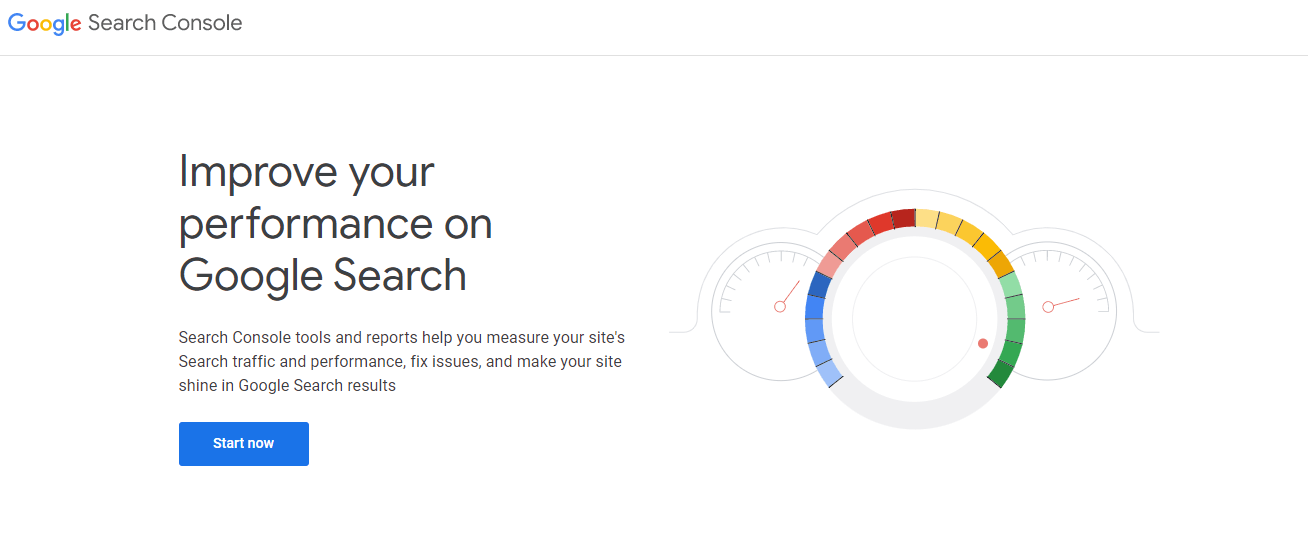
Google Search Console is a powerful free tool provided by Google that offers valuable insights into your website’s performance in search results as well as some basic backlink data. While it primarily focuses on website indexing and performance, it also provides basic information about the total number of backlinks your website has.
In the “Links” section, you can see the number of external links pointing to your site (referring domains), the domains that link to you the most, and the pages on your site with the most links (top linking pages). Google Search Console allows you to monitor and track your backlink profile directly from Google’s perspective. Even if the data in the Google search console is limited, it can give you a starting point for monitoring your backlink performance.
Ahrefs’s free backlink checker
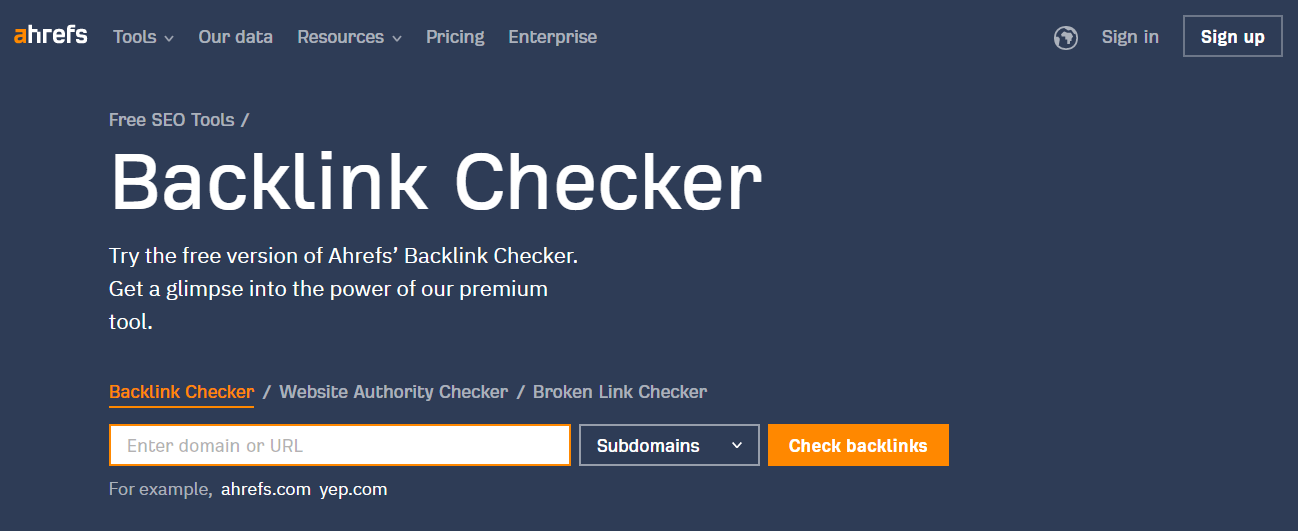
Ahrefs is a well-known SEO tool that offers a limited free backlink checker. With this tool, you can get a glimpse into the backlink profile of any website. It provides data on the total number of backlinks, referring domains, and the domain rating of those domains.
Ahrefs’s free backlink checker also shows the top 100 backlinks for any given website, allowing you to explore the specific backlinks pointing to a particular page. While the free version has limitations compared to the paid version, it offers valuable insights into the backlink profile of a website.
Moz Link Explorer
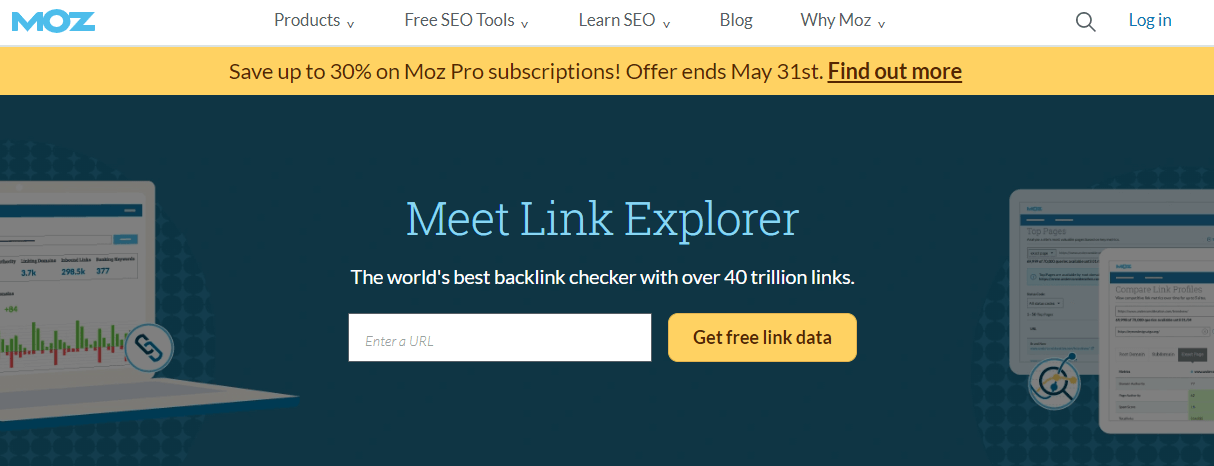
Moz Link Explorer is a free and trustworthy backlink checker tool that provides basic and useful information about a website’s backlink profile. It provides information regarding the number of backlinks, linking domains, link quality, spam scores, and anchor text. Moz also gives websites a domain authority score, which gives you an overview of their total authority.
Despite its limitations, the free version may provide you with an overview of your backlink profile and help you discover potential opportunities for your website’s growth.
The Hoth’s backlink checker
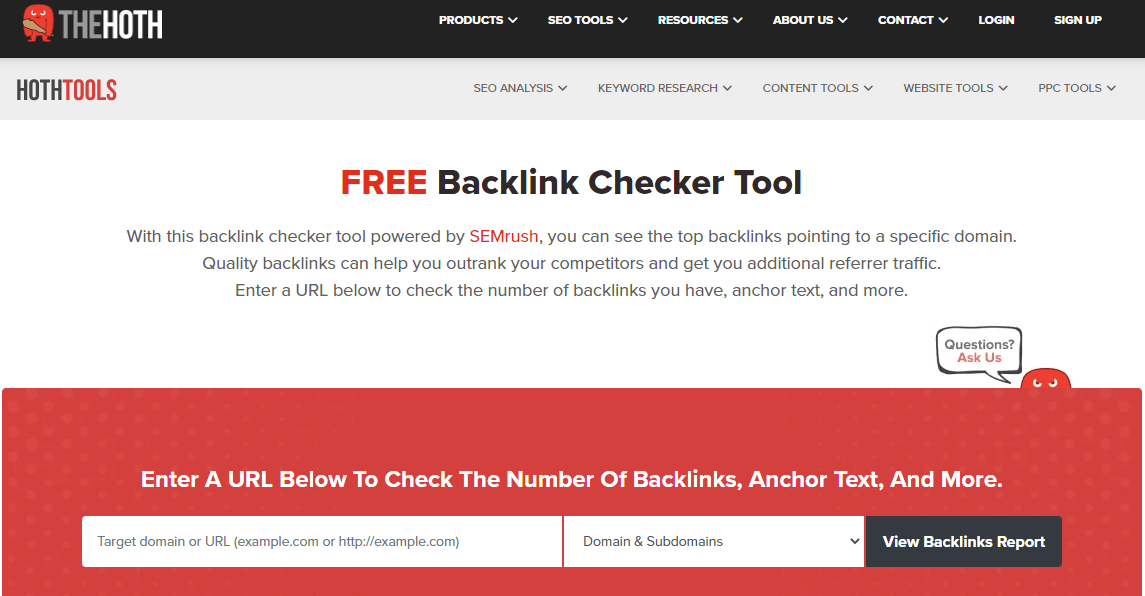
The Hoth provides a free backlink checker tool that enables you to examine any website’s backlink profile. This tool displays the overall number of backlinks, referring domains, top anchor texts, and other metrics.
The Hoth’s backlink checker additionally offers helpful data about the authority of the linking domains, giving you an understanding of the level of quality of the backlinks.
Neil Patel’s Backlink Checker (Ubersuggest)

Ubersuggest is a free SEO tool that offers various backlink analysis features, including a backlink checker. It provides an overview of your website’s backlink profile, including the number of backlinks, referring domains, and the authority score of those domains.
Ubersuggest also allows you to view the anchor text distribution of your backlinks and identify the top-performing pages in terms of backlinks. Like any free backlink checker, this version has limitations, but it can still give you valuable insights into your backlink profile. Ubersuggest also offers keyword research, competitor analysis, content ideas, and other SEO tools.
When using paid or free backlink checker tools, it’s essential to consider factors such as the tool’s database size, data accuracy, the ability to export data, track backlink changes over time, and identify toxic or spammy backlinks, as well as some additional features. Each tool mentioned above has its own strengths and limitations, so it’s beneficial to experiment with different tools to find the one that best suits your specific needs and budget.
Remember, while these backlink checker tools can provide valuable insights, it’s important to use them as part of a comprehensive SEO strategy. By regularly monitoring your backlinks, you can identify opportunities for improvement, disavow harmful links, and build a strong backlink profile to enhance your website’s visibility and organic search rankings.
Finally, backlink analysis is just one piece of the puzzle. To obtain high-quality backlinks, focus on creating valuable content, engaging with your target audience, and implementing effective outreach strategies. Also, Building relationships with other website owners and providing them with compelling reasons to link to your content can lead you to get high-quality backlinks that boost your website’s authority and search rankings.
How to analyze backlinks
Now that you’ve understood the meaning of backlinks, know how to get high-quality ones, and have gotten some, it’s time to analyze them.
Analyzing backlinks is a crucial aspect of any successful SEO strategy. By thoroughly evaluating your backlink profile, you can identify the quality and relevance of your existing backlinks and make informed decisions to improve your link-building efforts.
Here are six comprehensive steps you can follow to analyze backlinks and ensure you’re getting high-quality backlinks for your website:
Understand the Link Metrics
Start by examining the key metrics associated with your backlinks. Look for metrics such as the number of referring domains, domain authority, page authority, and anchor text distribution. These metrics provide insights into the overall quality and authority of your backlinks.
Assess link relevance
Evaluate the relevance of the linking websites to your own website’s niche or industry. Backlinks from websites that are topically related to your content carry more weight in terms of SEO. Ensure that the linking websites are authoritative and trustworthy sources within your industry.
Check for toxic backlinks
Identify and eliminate any toxic or spammy backlinks that may harm your website’s SEO. Utilize backlink analysis tools (backlink checkers that we’ve spoken about them earlier) to identify potentially harmful links, such as those coming from link farms, low-quality directories, or irrelevant sources. Disavow these toxic links to prevent any negative impact on your website’s rankings.
Examine the anchor text
Analyze the anchor text used in your backlinks. A natural and diverse anchor text distribution is crucial for a healthy backlink profile. Avoid over-optimization or excessive use of exact-match keywords in anchor texts, as it can be seen as manipulative by search engines.
Analyze your competitors’ backlinks
Gain insights from your competitors’ backlinks to identify potential opportunities for your link-building efforts. Use backlink analysis tools to explore the backlink profiles of your competitors and identify authoritative websites that link to them. This can provide valuable insights into potential link prospects for your website.
Monitor Backlink Growth
Regularly monitor the growth of your backlink profile over time. Analyze the rate at which you are acquiring new backlinks and the quality of those links. Track your progress and make adjustments to your link-building strategies based on the results.
Remember, quality trumps quantity when it comes to backlinks. Focus on obtaining high-quality backlinks from authoritative sources that are relevant to your website’s content. By regularly analyzing your backlink profile and making informed decisions, you can build a strong backlink profile that boosts your website’s visibility, authority, and search engine rankings.
FAQs
Because the subject of obtaining high-quality backlinks is so vast, we’ve created a list of frequently asked questions and focused on giving brief answers:
Are there any risks associated with building backlinks?
While backlink building is an essential part of SEO, there are potential risks to be aware of. Building backlinks from low-quality or spammy websites can harm your site’s reputation and lead to penalties from search engines. It’s crucial to focus on acquiring high-quality, relevant backlinks from reputable sources to minimize these risks.
What is the difference between a link and a backlink?
A link refers to a hyperlink that connects one webpage to another, allowing users to navigate between different web pages. On the other hand, a backlink, also known as an inbound link, is a link that originates from one website and points to another website. The key distinction is that while a link can connect pages within the same website or direct users to external sources, a backlink specifically focuses on incoming links from external websites.
Backlinks are essential in SEO as they serve as a vote of confidence from one website to another, indicating its authority and relevance. They play a crucial role in search engine rankings, as search engines consider the quality and quantity of backlinks when determining a website’s credibility and authority. In contrast, regular links primarily facilitate navigation and resource sharing between web pages.
What are backlinks, and why are they crucial for SEO?
Backlinks are incoming links coming from other websites toward your own website. They play a crucial role in SEO as they indicate to search engines such as Google and Bing the credibility and authority of your website, which will help you rank higher in search engines.
How can I identify high-quality backlinks?
High-quality backlinks come from authoritative and relevant websites in your industry. Look for backlinks from reputable sources with strong domain authority and organic traffic.
Is it better to have a few high-quality backlinks or numerous low-quality ones?
Quality outweighs quantity when it comes to backlinks. It’s better to focus on obtaining high-quality backlinks from authoritative sources rather than a large number of low-quality backlinks from untrustworthy ones.
How can I attract natural backlinks to my website?
Creating high-quality and valuable content is the key to attracting natural backlinks. Focus on producing informative articles, engaging infographics, and useful resources that other websites will want to link to.
Can I buy backlinks for my website?
Purchasing backlinks is prohibited by search engine policies and can lead to penalties. It’s essential to focus on organic and natural methods of acquiring backlinks for long-term success.
How can I leverage social media for backlink building?
By promoting your content on social media platforms, you can increase its visibility and encourage others to share and link to it. Engage with industry influencers and relevant communities to expand your reach and attract backlinks.
Should I disavow low-quality or spammy backlinks?
If you have identified low-quality or spammy backlinks that are negatively impacting your site’s SEO, you can disavow them. Disavowing those links tells search engines to ignore them when evaluating your website’s authority.
How long does it take to see the impact of backlink building on SEO?
While it’s natural to expect quick results, the truth is that the timeline can vary depending on several factors. After you get high-quality backlinks, search engines need time to discover and evaluate them. It typically takes a few weeks or months to notice initial improvements in search rankings.
However, the full impact may take longer, as building a strong backlink profile is an ongoing process. Factors like industry competitiveness and competitor backlink profiles also play a role. Remember, patience and consistent effort in acquiring high-quality backlinks will yield the best long-term SEO results.
What is the importance of anchor text in backlinks?
The term “anchor text” refers to the text that can be clicked within a hyperlink. It helps search engines understand the context and relevance of the linked page. Using descriptive and keyword-rich anchor text can enhance the SEO value of the backlink and improve your website’s ranking for specific keywords.
Can internal linking help with backlink building?
Yes, internal linking plays a role in building backlinks. By strategically linking relevant pages within your website, you improve user navigation and create a network of interconnected pages that search engines can crawl and index. This can indirectly contribute to the overall authority and visibility of your site.
How can I track the success of my backlink-building efforts?
Monitoring and tracking the success of your backlink-building efforts is crucial. Utilize analytics tools like Google Analytics to measure referral traffic from backlinks, track keyword rankings, and assess overall website performance. This data will help you evaluate the effectiveness of your backlink strategy and make any necessary adjustments.
How can I recover from a backlink penalty?
If your website has been hit with a backlink penalty, it’s essential to take immediate action to recover. Start by identifying the cause of the penalty, such as low-quality or spammy backlinks.
Once you’ve identified the problematic links, make efforts to remove or disavow them. Submit a reconsideration request to the search engine, outlining the steps you’ve taken to rectify the issue and demonstrating your commitment to following their guidelines.
Are backlinks the only factor that affects my website’s ranking?
Backlinks are an essential factor in determining a website’s ranking, but they are not the only factor. Search engines consider numerous other factors, including the quality of your content, website structure, user experience, mobile friendliness, and overall relevance to the search query. A comprehensive SEO strategy encompasses all these elements to improve your website’s visibility in search engine results.
Can I rank high in search results without backlinks?
While it’s possible to rank higher in search results without a significant number of backlinks, it’s generally more challenging. Backlinks play a crucial role in indicating the credibility and authority of your website to search engines. They provide signals that your content is valuable and trusted by others. To achieve and maintain high rankings, it’s recommended to incorporate backlink building as part of your overall SEO strategy.
What’s the Difference Between Referring Domains and Backlinks?
Referring domains and backlinks are two interconnected concepts in the realm of SEO. While they are related, there is a distinct difference between them.
Backlinks refer to individual links that point from one website to another, establishing a connection between the two. They are essentially endorsements, signaling to search engines the relevance and authority of the linked website.
On the other hand, referring domains encompass the collection of unique websites that provide backlinks to a particular website. It focuses on the number of different domains linking to a website, highlighting its popularity and visibility across the web. In essence, referring domains provide a broader view of the website’s link profile, emphasizing the diversity and reach of its backlinks.
Let’s say you have a website about tech. Imagine your website has a backlink from Google. In this case, Google becomes a referring domain. Now, let’s say your website also receives a backlink from Facebook. Now you have two referring domains: Google and Facebook. However, if you get two backlinks from Google alone, it still counts as one referring domain. So, remember, the number of referring domains is determined by the unique sources linking to your website, regardless of how many backlinks they provide.
Understanding the difference between referring domains and backlinks is essential for analyzing the strength and effectiveness of a website’s link-building strategy. By acquiring backlinks from diverse and authoritative referring domains, website owners can enhance their search engine rankings and boost their online presence.
Is it good if I use more than one backlink checker tool?
Utilizing a combination of backlink checker tools can provide a more comprehensive view of your backlink profile. Paid tools often offer more advanced features and detailed analysis, while free tools can serve as an initial starting point for assessing your backlinks.
How can I build backlinks for a new website?
Building backlinks for a new website requires a proactive approach. Start by creating valuable and high-quality content that others in your industry would want to link to. Engage with your target audience through social media, forums, and other online communities to build relationships and attract attention to your content. Reach out to relevant websites and influencers, offering guest posts, collaboration opportunities, or resource recommendations that can earn you valuable backlinks.
How frequently should I monitor my backlink profile?
Regular monitoring of your backlink profile is crucial to ensuring its quality and identifying any potential issues. It’s recommended to monitor your backlinks at least once a month using backlink analysis tools. This allows you to identify any new backlinks, detect spammy or low-quality links, and take necessary actions such as removal or disavowal. Continuous monitoring helps you maintain a healthy and high-quality backlink profile, supporting your overall SEO efforts.
What are SERPs? and how do they impact your website’s online visibility?
SERPs, or Search Engine Results results pages, are the results shown by search engines such as Google and Bing as a reply to a user’s search. When you search for something on Google or any other search engine, the list of websites and snippets that appear on the screen is the SERP. It’s where users find relevant information, products, or services based on their search intent.
The SERPs include organic search results, paid advertisements, featured snippets, knowledge panels, and other elements. They are influenced by various factors, including search engine algorithms, keyword relevance, website authority, and user experience. As an SEO professional or a blog owner, understanding SERPs and optimizing your content to rank higher can significantly impact your website’s visibility, traffic, and overall success.
Conclusion
In conclusion, obtaining high-quality backlinks is a crucial aspect of SEO that can significantly impact your website’s visibility and rankings in search engines. Throughout this article, we have explored various effective strategies to acquire these valuable backlinks, which are By implementing them consistently and remaining patient, you can pave the way for improved search engine rankings, increased organic traffic, and ultimately the success of your website or blog.
However, it’s important to note that while backlinks can be an important factor in improving a website’s search engine ranking and authority, it’s also important to focus on creating unique, high-quality, and valuable content that attracts natural links from other websites.
Rather than focusing solely on building backlinks, it’s important to take a holistic approach to all SEO tactics that include on-page optimization, off-page optimization, content creation, and outreach to build relationships with other websites in your industry or niche, which will lead you to get high-quality backlinks automatically.
If you have any questions about obtaining high-quality backlinks for your website, please leave them in the comments section below, and we will try our best to respond. We are grateful for your interest in our content.
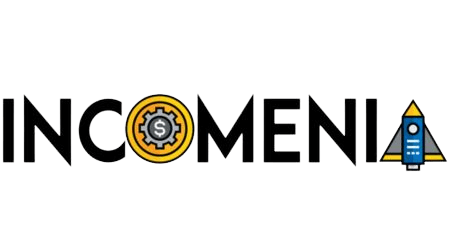



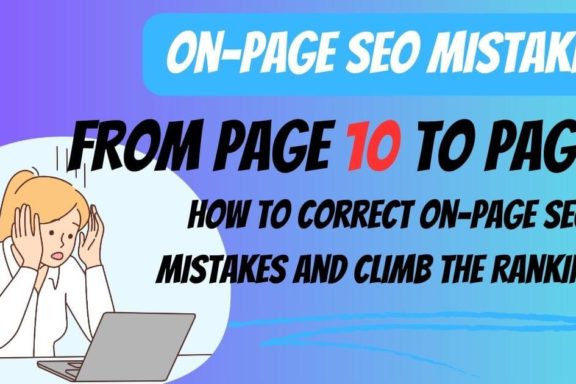

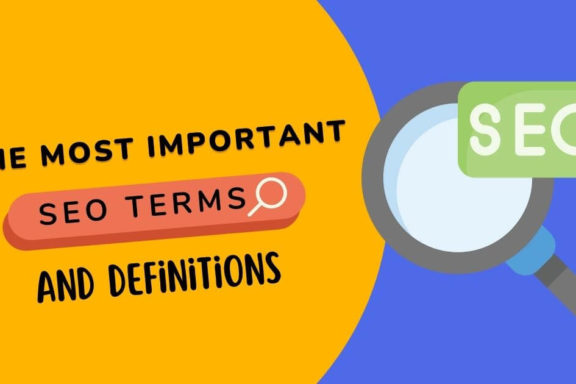
No Comments